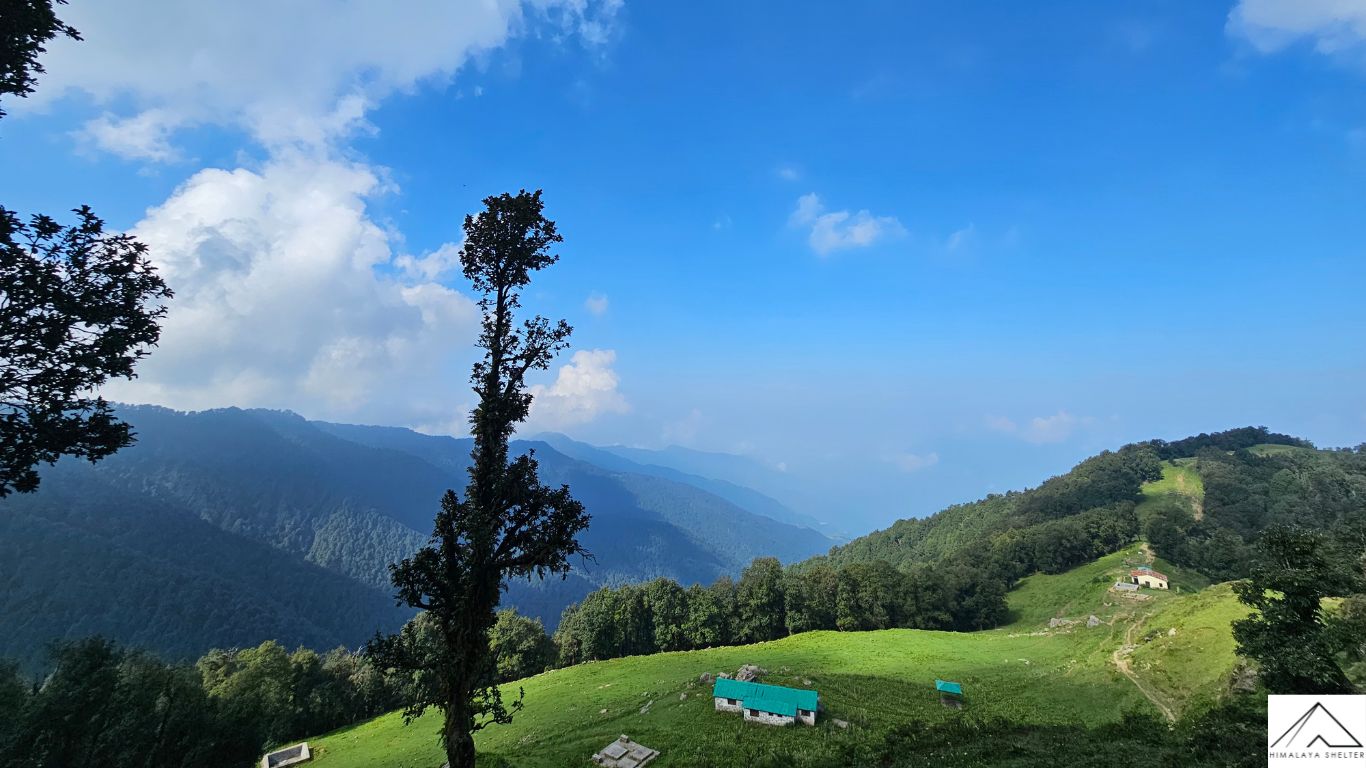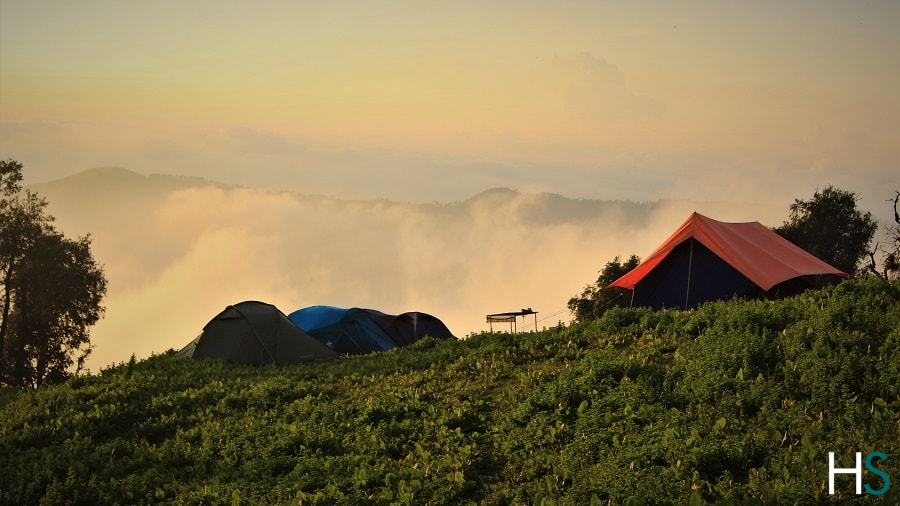
Peaks visible from Nag Tibba, such as Bandarpunch Massif on the right & Swargarohini on the Left


 Flora Along the trail
Flora Along the trail
 View Capture While heading to the summit
View Capture While heading to the summit
 Local Noneatable Mushroom on the trail
Local Noneatable Mushroom on the trail
 Heading to the summit
Heading to the summit
 Trail goes to nag Tibba summit
Trail goes to nag Tibba summit
 Wild Mushroom
Wild Mushroom
 Base camp of Nag Tibba Trek
Base camp of Nag Tibba Trek
 Picture from the Khatian campsite
Picture from the Khatian campsite
 Snow covered meadows at Nag Tibba top in December
Snow covered meadows at Nag Tibba top in December
 Views in early November Month from the top
Views in early November Month from the top
 The snow covered campsite in January
The snow covered campsite in January
 Snow covered trails with Rhododendrons all around.
Snow covered trails with Rhododendrons all around.
 The beautiful blooming Kathian Campsite in June with wild mint canvassing the campsite
The beautiful blooming Kathian Campsite in June with wild mint canvassing the campsite
 The beautiful ridge along the Nag Tibba temple
The beautiful ridge along the Nag Tibba temple
 Sunset views from Campsite
Sunset views from Campsite
 Grasslands in March
Grasslands in March
The Nag Tibba trek is a fantastic adventure suitable for families and individuals of all ages who have a reasonable level of fitness. This captivating trek is tailor-made for young adventurers aged 8 and above, offering an extraordinary opportunity to immerse themselves in the wonders of the great outdoors while relishing the exhilarating joys of hiking.
While the Nag Tibba trek may not be a challenging trek, making sure your adventure goes smoothly requires careful planning. Choose comfy, sturdy hiking shoes, bring enough water and tasty snacks, and dress smartly for any weather changes to stay both stylish and comfortable.
The Nag Tibba trek offers a unique and beautiful experience throughout the year, with each season showcasing its own charm. If you really love snow, the ideal time to visit is December and January. During these months, the trail is draped in a beautiful layer of white snow, creating a magical winter wonderland that promises an unforgettable experience.
During the summer months, the trail transforms into a beautiful landscape, with colorful Rhododendrons and Wild Mint adorning the campsite at Kathian. The lovely weather and vibrant green surroundings make it a perfect time to visit for nature lovers and those who enjoy picturesque hikes.
However, it is recommended to avoid the monsoon season as the excessive rainfall can make the trail less accessible and potentially hazardous. Trekkers should exercise caution and plan their visit accordingly to ensure a safe and enjoyable experience.
Customizing a trek enables participants to design their own itinerary, including appropriate accommodation, medical facilities, and support staff. Customized treks can be arranged for celebrations like birthdays, anniversaries, or other special occasions, creating unforgettable memories.
Daily 30 minutes of jogging before 7 days of trek
Daily 15 minutes of running before 7 days of trek
Yoga and Surya Namashkar for flexibility
Pick up point will be Prince Chowk Dehradun
The starting point of Nag Tibba Trek is Pantwari village
At Himalaya Shelter, we see our trekkers as part of our community, like an extended family. We truly appreciate the dedication you put into taking a well-deserved break and heading to the mountains. We understand that some of you wait for months, or even a year, to plan that perfect getaway. That’s why we want it to be “a perfect excursion” for you.
Safety is our top priority, and we make sure our team is well-trained to handle any emergencies.
For a more comfortable experience, we offer twin-sharing accommodation throughout the trek. Unlike many other trekking operators who often provide triple or even quad-sharing arrangements, we prioritize your comfort by providing twin-sharing options.
Our Accommodation will have attached washrooms
Furthermore, we provide the essential safety gear for your trek –
Without any additional charges.
We treat you to delicious meals that keep you energized throughout the trek. (On our google maps out of 300 reviews over 80 Trekkers mention great food😋)
We do not outsource services to ensure topmost quality throughout your journey. We use our own vehicles to take you to the starting point and back.
The cost of Nag Tibba Trek is ₹3500 + 5% GST
Yes! Our team will provide camping equipment
Yes! it’s a safe trek
You do not need a permit to visit Tibba Trek if you are an Indian citizen.
Two Night Three Days are sufficient to do this trek you can also customize this trek to add or reduce days
The charm of this trek lies in its scenic trails, lush forests, and the breathtaking 360-degree views from the summit of Nag Tibba.
Yes! We offer a free cloakroom service for you to store any extra luggage you don’t want to carry while trekking.
The maximum strength of our group is 12 people
Certified Trek Leaders, Cook, helpers, and supporting staff
The Nearest ATM you will find in Pantwari, State Bank of India, Punjab National Bank, And Union Bank of India
The height of Nag Tibba peak is 9,915 feet (3,022 meters). This impressive altitude of 9,910 feet, marks it as the highest peak in the Lesser Himalayan region of the Garhwal Himalayas. From this vantage point, you’ll be treated to sweeping views of neighboring peaks including the Doon Valley and Kedarkantha Peak. While the summit may be lofty, the breathtaking vistas offer more than justify the climb.
This trek is located roughly 100 kilometers from Dehradun and about 70 kilometers from Mussoorie. To embark on this adventure, you’ll need to reach Pantwari Village, which serves as the base camp for the trek.
The trekking season typically commences in March, with the region still adorned in snow. However, by the end of the month, the snow begins to melt, giving way to sunny days. Daytime temperatures range from 20 to 25 degrees Celsius, providing a pleasant atmosphere. As night falls, the temperature dips to around 8-13 degrees Celsius.
During the monsoon season, rain is a common occurrence, especially in the lower portions. At higher altitudes, rainfall is comparatively lighter. Post-monsoon, from September to December, the days are marked by clear skies. During the day, temperatures range from 14 to 18 degrees Celsius, and in the evenings, it cools down to around 10 degrees Celsius.
Pantwari serves as the basecamp or starting point for the Nag Tibba Trek.To get to Pantwari Village, you can either take a bus or a taxi from Dehradun. The journey covers a distance of 100 kilometers and usually takes around 2 to 3 hours.
Unlike many other treks, the Nag Tibba trek remains open throughout the winter season. It’s one of the rare Himalayan treks that can be undertaken even in winter.
You can anticipate snowfall on the Nag Tibba Trek between December and March. For the most abundant snowfall experience, January and February are the prime months when the higher stretches of the trek are blanketed in a thick layer of snow.
Remember, Himalayan weather can be unpredictable, so it’s crucial to check the latest weather forecast before starting your trek. Additionally, be well-prepared for various weather conditions, especially during the winter season.
Absolutely, April is an excellent time for a Nag Tibba trek. It’s considered the most favorable period for trekking and various adventure pursuits in the valley. During the peak winter season, trekking and outdoor activities are limited or closed due to heavy snowfall. Nag Tibba special is its convenient starting point in Pantwari, making it an excellent option for a trek.
Yes, It’s entirely possible to reach the summit of the Nag Tibba trek in just one day. It typically takes around 7-8 hours to cover the approximately 8 km distance from the base camp to the summit. While some trekkers opt for an overnight camp to unwind and engage in activities like bonfires, many choose to complete the trek in a day for a fulfilling experience.